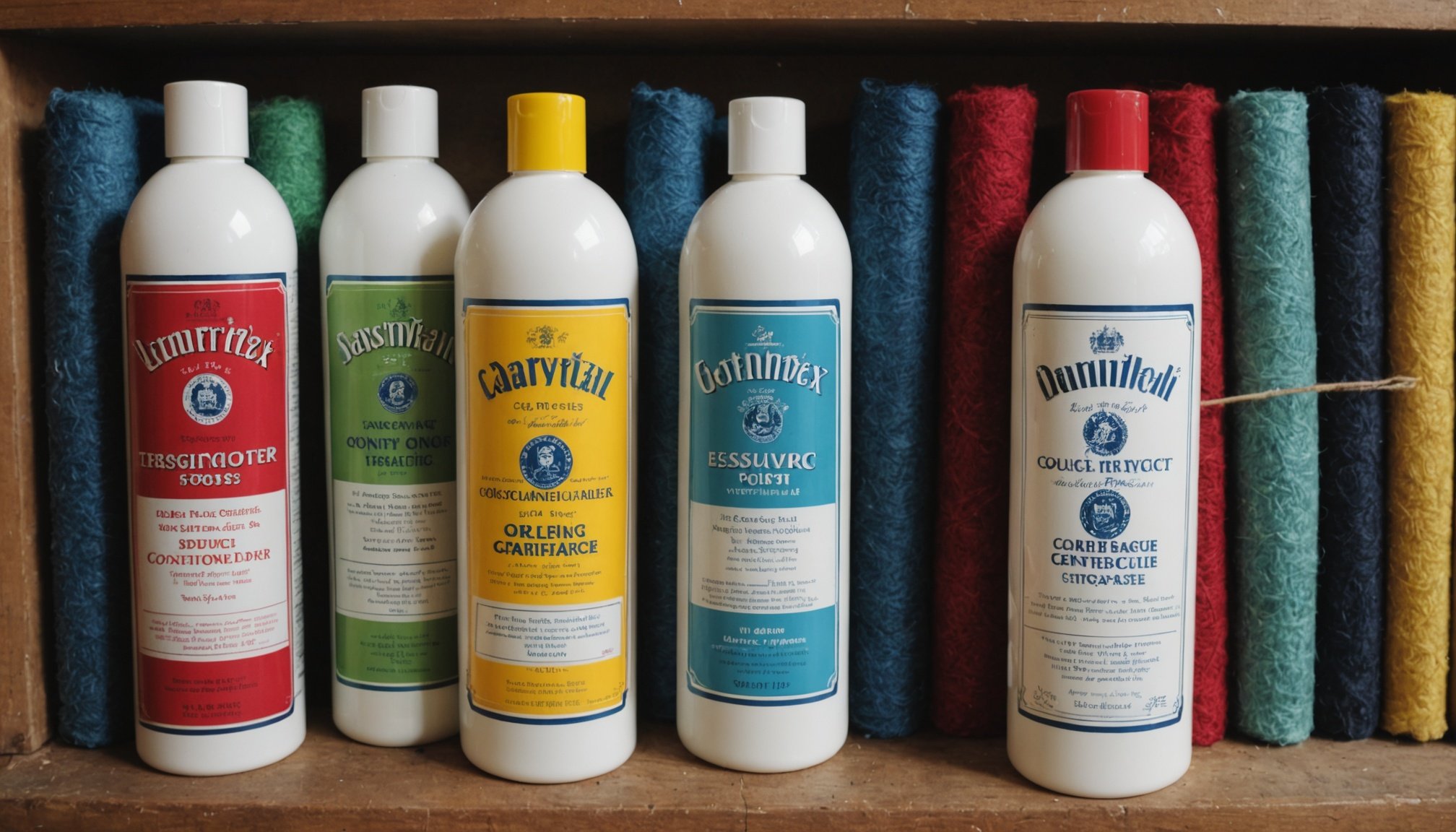Understanding Vintage Fabrics and Their Unique Needs
Vintage fabrics are a delicate reminder of bygone eras, boasting unique characteristics that require meticulous care. Their age often means they are more susceptible to issues like fading, tears, and texture degradation. Preserving the color and texture of these fabrics is crucial to maintain their historical and aesthetic value. This process begins with understanding what makes them vulnerable.
Many vintage textiles are composed of natural fibers such as cotton, silk, or wool, which can be especially prone to damage. Common issues include color fading from exposure to sunlight or harsh chemicals, and texture changes due to mechanical stress during washing. Improper care could lead to irreparable damage, such as shrinkage or loss of shape.
In the same genre : Unlock Chic Layering Secrets: The Definitive Guide to Stylish Wardrobes for Unpredictable UK Weather
To prevent such mishaps, it is essential to handle these fabrics with caution, particularly when it comes to cleaning techniques and storage conditions. Ensuring proper fabric care involves gentle handling, using pH-balanced products, and avoiding potentially harmful elements. Being informed about the specific requirements of vintage textiles can significantly prolong their lifespan and preserve their charm for future generations.
Features of an Ideal Fabric Conditioner for Vintage Clothing
When caring for vintage fabrics, selecting the right fabric conditioner is essential. Let’s delve into the characteristics that make a fabric conditioner suitable for these delicate textiles.
Additional reading : Elevating British High Street Fashion to High-End Couture: The Definitive Styling Handbook
Importance of pH-Balanced Formulations
A pH-balanced formulation is crucial in fabric conditioners for vintage clothing. These formulations prevent damage to the natural fibers, safeguarding the fabric’s integrity. A balanced pH level ensures that the conditioner is neither too acidic nor too alkaline, thereby preserving the color and texture of the fabric.
Role of Enzymes in Fabric Conditioners
Enzymes play a significant role in fabric conditioners, breaking down organic residues like sweat and oils without harsh scrubbing. For vintage textiles, using an enzyme-based conditioner can gently cleanse, enhancing the material’s longevity without causing abrasion.
Non-Toxic Ingredients and Their Benefits
Using a conditioner with non-toxic ingredients is not just environmentally friendly but also crucial for vintage textiles. Ingredients free from harmful chemicals like phosphates and synthetic dyes ensure the fabric does not suffer from color fading or texture degradation. In addition to prolonging the life of vintage fabrics, these conditioners also protect against allergies.
Best Practices for Using Fabric Conditioners on Vintage Textiles
When applying a fabric conditioner to vintage textiles, attention to detail can make a significant difference. An essential practice is the dilution method, which varies depending on the fabric type. Always follow the recommended dilution ratio on the product label to avoid over-conditioning or damaging the textiles. Delicate fabrics like silk and wool may require a more diluted solution compared to sturdier cotton.
Timing is another key factor. Introduce the fabric conditioner during the final rinse cycle of your washing process. This ensures that the conditioner coats the fabric evenly, providing maximum protection without leaving residues that might cause yellowing or stiffness over time.
Avoid overheating and rapid drying, as these can weaken fibers and alter the vintage texture. Instead, opt for air drying in a shaded area to preserve the fabric’s color and shape. If machine drying is necessary, use a low-heat setting to protect the garment.
Finally, when in doubt, always test a small inconspicuous area of the fabric with the conditioner first. This precaution helps to identify any adverse reactions before treating the entire garment, securing its longevity and authentic charm.
Essential Product Recommendations for the UK Market
In the UK market, several recommended fabric conditioners stand out for their practicality in preserving vintage textiles. When selecting the best products, consider options tailored to gentle care, prioritizing pH balance and non-toxic ingredients.
Overview of Top-Rated Brands
Brands like Ecover and Method excel with formulations free from harsh chemicals, ideal for vintage fabrics. Their fabric conditioners maintain the integrity of delicate materials while offering eco-friendly benefits.
Comparison of Gentle Formulations
Assessing different formulations reveals varying levels of gentleness. Products from Ecover focus on plant-derived ingredients, while Method offers a sophisticated blend of naturally derived softeners. Both options cater to sensitive textiles, ensuring minimal impact on fabric texture and colour.
User Reviews and Effectiveness
User feedback highlights the effectiveness of these conditioners, with many appreciating the absence of synthetic fragrances that can affect vintage textiles. Reviews often note the subtle scent left behind, which adds a pleasing touch to the vintage care routine without overpowering the garment’s original aroma.
By carefully selecting such high-quality fabric conditioners, you can extend the life of your vintage pieces, ensuring they remain vibrant and cherished for years.
DIY Alternatives to Fabric Conditioners
Vintage fabric enthusiasts often seek DIY versions of fabric conditioners to avoid harsh chemicals. These homemade solutions use natural ingredients that are gentle on vintage textiles, ensuring the preservation of their unique qualities. Let’s explore some beneficial alternatives and when they might be preferable.
Benefits of Natural Ingredients
Utilising natural elements like vinegar, essential oils, and baking soda offers a safer option for vintage fabric care. Vinegar acts as a natural softener, helping to maintain fabric texture without the risk of fading colours. Essential oils not only leave a natural fragrance but also have antifungal properties that can help protect textiles from mildew, contributing to the fabric’s longevity.
Recipes for Safe DIY Conditioners
Creating a DIY fabric conditioner can be simple. A popular recipe involves mixing one part vinegar with two parts distilled water, adding a few drops of your favourite essential oil for aroma. This blend not only softens the fibers but also freshens the fabric.
Choosing DIY Over Commercial Products
DIY solutions are ideal when affordability and environmental impact are top priorities. However, for specific vintage pieces needing tailored care, commercial products may offer more targeted formulations. Consider your fabric’s needs and these factors to make the best choice for each unique garment.
Conclusion and Final Thoughts on Vintage Wardrobe Care
Caring for vintage clothing requires special attention to ensure these timeless pieces endure. Selecting the right fabric conditioner is imperative. Focusing on options with pH-balanced and non-toxic ingredients is crucial. These choices help maintain the delicate balance needed for aging materials.
Experimenting with both commercial products and DIY alternatives allows enthusiasts to discover what works best for their vintage pieces. It’s beneficial to start with smaller trials, which reduces the risk of damage. This flexible approach aids in uncovering optimal care routines tailored to each fabric’s needs.
Remember, consistent care is key in preserving vintage integrity. Techniques like proper storage and gentle handling complement fabric conditioners in maintaining both color and texture. These strategies collectively protect against common issues like color fading and texture degradation.
Investing time in research and understanding the unique requirements of vintage textiles fosters a deeper appreciation for their historical significance. This ensures that these beloved garments remain vibrant and cherished for years to come. By observing these care tips for vintage clothing, you safeguard the legacy they carry, allowing future generations to enjoy and admire their enduring beauty.








